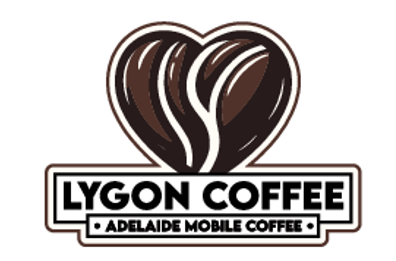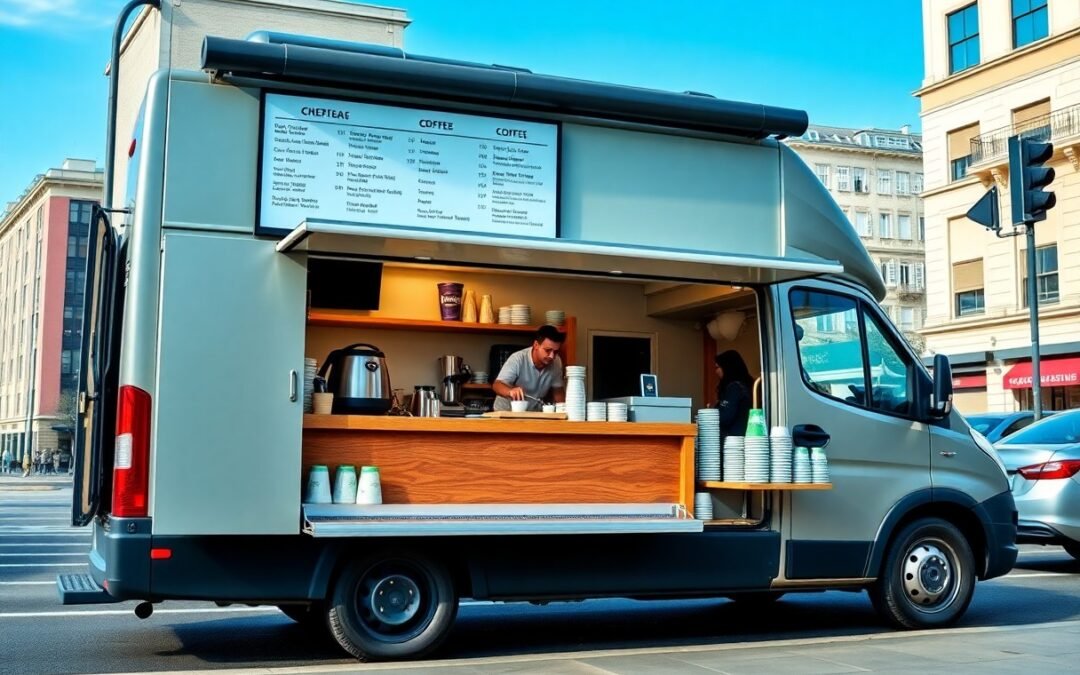There’s a thriving market for mobile coffee vans, and with the right approach, you can turn your passion for coffee into a profitable daily venture. This guide will equip you with imperative strategies to attract customers, manage your operations efficiently, and create a memorable experience for coffee lovers. Whether you’re just starting or looking to enhance your current setup, these practical tips will help you maximize your success and keep your business on the move.
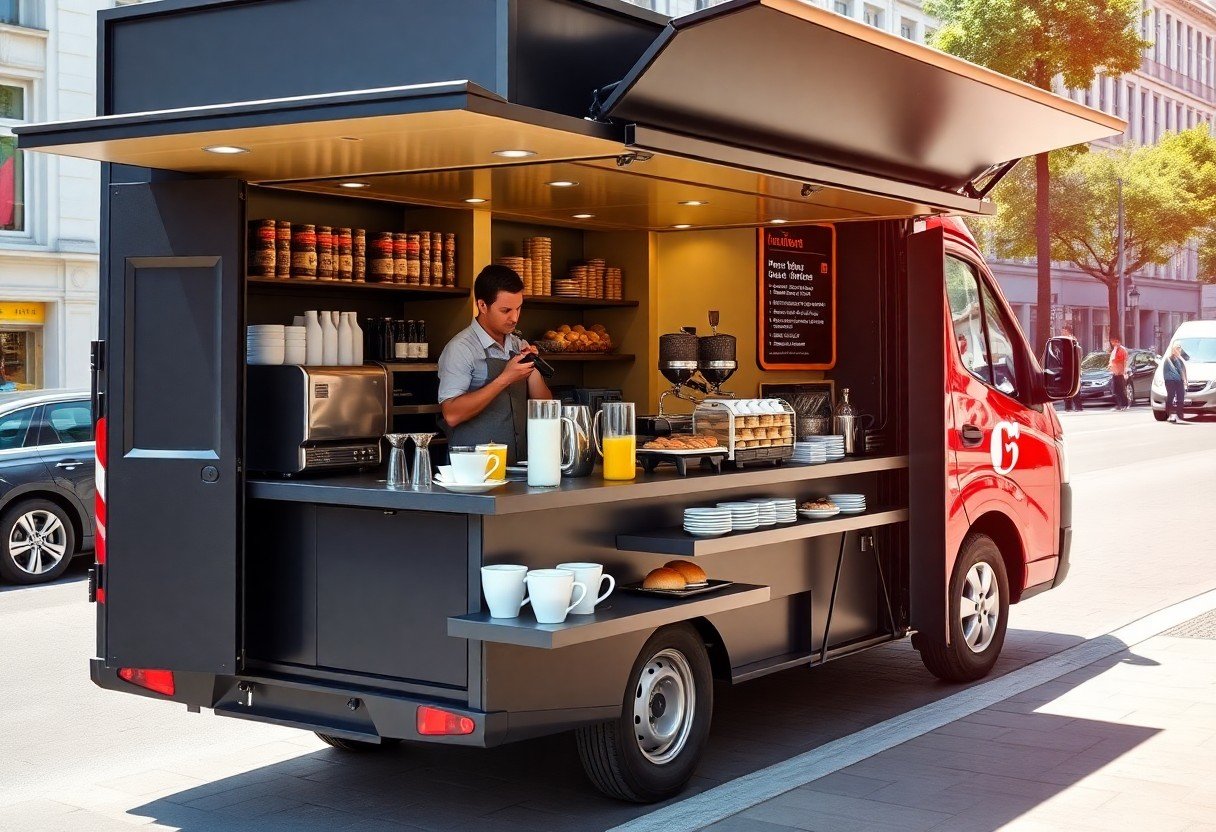
Crafting Your Unique Coffee Identity
Defining Your Brand and Niche
Your coffee van’s success hinges on clearly defining its brand and niche. Start by identifying what differentiates your offerings from competitors. Are you focusing on specialty blends, organic options, or perhaps a unique brewing method? You might specialize in artisanal pastries that pair beautifully with your beverages or cater to health-conscious consumers by offering low-sugar or dairy-free alternatives. Analyze the demographic in your target areas, considering their preferences and habits. Tailoring your identity to match their lifestyle will establish a strong, relatable presence.
Selecting the Right Coffee Products
Your choice of coffee products can either attract or deter customers, making it imperative to select wisely. Consider offering a curated selection of high-quality beans sourced from reputable suppliers. Single-origin coffees can be highlighted on your menu, appealing to aficionados who appreciate unique flavor profiles. Furthermore, incorporating seasonal offerings or limited-edition blends can entice regular customers to explore new tastes. Think about adding complementary products like flavored syrups, alternative milks, and unique add-ons, which can enhance customer experience.
Consider also the importance of transparency around your sourcing practices. Showcasing ethically-sourced beans or partnerships with local roasters supports your brand identity while appealing to conscious consumers. Offering educational workshops on brewing methods or coffee tasting can further demonstrate your commitment to quality and expertise, reinforcing customer loyalty and enhancing their overall experience with your coffee van.
Mastering Operational Efficiency
Streamlining Your Daily Workflow
Efficiency in your daily operations can significantly affect your profit margins. Begin each day with a well-defined plan, including a set schedule for opening, preparation, and peak service times. Assign specific roles to your team members—this could mean designating one staff member to handle orders while another focuses on coffee preparation. Utilizing a checklist ensures that all equipment is ready, ingredients stocked, and waste minimized, reducing downtime and enhancing customer satisfaction.
Incorporating technology can further streamline your workflow. Consider using a point-of-sale system that tracks orders and inventory in real-time. This allows you to serve customers swiftly and accurately, minimizing errors and confusion during busy periods. Implementing a system for online pre-orders can also optimize the workflow, allowing you to prepare drinks ahead of time and reduce waiting time for your customers.
Optimizing Your Supply Chain
Your supply chain plays a critical role in maintaining quality and minimizing costs. Establish relationships with multiple suppliers to ensure you have access to fresh ingredients at competitive prices. Regularly review your inventory levels and supplier performance, and utilize bulk purchasing to negotiate better rates and reduce per-unit costs.
Digital tools can enhance your supply chain management. Utilizing inventory management software can help track sales trends and predict future needs. For instance, if you’ve noticed a spike in iced coffee sales during summer months, you can adjust your orders accordingly. Staying adaptable allows you to respond to changes swiftly, preventing stockouts and waste.
Exploring local sources for fresh ingredients not only supports the community but can also reduce delivery times and shipping costs. Collaborating with local roasters for your coffee beans or farmers for fresh milk can enhance your offerings and create a unique selling proposition. This transparency can resonate with customers, further solidifying their loyalty to your mobile coffee van.
Building a Loyal Customer Base
Engaging with Local Communities
To cultivate a loyal customer base, deepening connections with local communities is paramount. Participate in neighborhood events, farmers’ markets, or festivals, and set up a booth to showcase your coffee offerings. Engaging with residents face-to-face fosters relationships and encourages them to seek you out regularly. Joining local business alliances or chambers of commerce can also enhance your visibility and credibility within the community.
Collaborating with nearby businesses creates cross-promotional opportunities. Pair up with a local bakery to offer combo deals or partner with local artists to host events showcasing their work at your van. These collaborations not only draw more people to your coffee van but also position you as an integral part of the community fabric, enhancing customer loyalty.
Utilizing Social Media and Marketing Strategies
Effective use of social media can significantly bolster your customer base. Platforms like Instagram and Facebook allow you to share delicious visuals of your coffee, daily specials, and customer testimonials. Regular updates create anticipation among your followers, with engaging content that invites interaction, such as polls or contests. Consistency in posting, along with authentic interaction, strengthens your relationship with customers and enhances brand loyalty.
Developing targeted local advertising strategies can further increase visibility. Use geo-targeted ads on social media to reach potential customers in your area, and consider running seasonal promotions or loyalty programs that reward frequent buyers. Data from your sales can inform these strategies, helping you understand peak times and customer preferences, enabling you to adjust offerings that resonate most.
Incorporating eye-catching visuals and engaging storytelling in your social media posts can significantly improve customer engagement. Consider sharing behind-the-scenes content, showcasing your coffee-making process, or highlighting customer experiences. These elements add a personal touch that connects you to your audience, encouraging them to return to your coffee van.
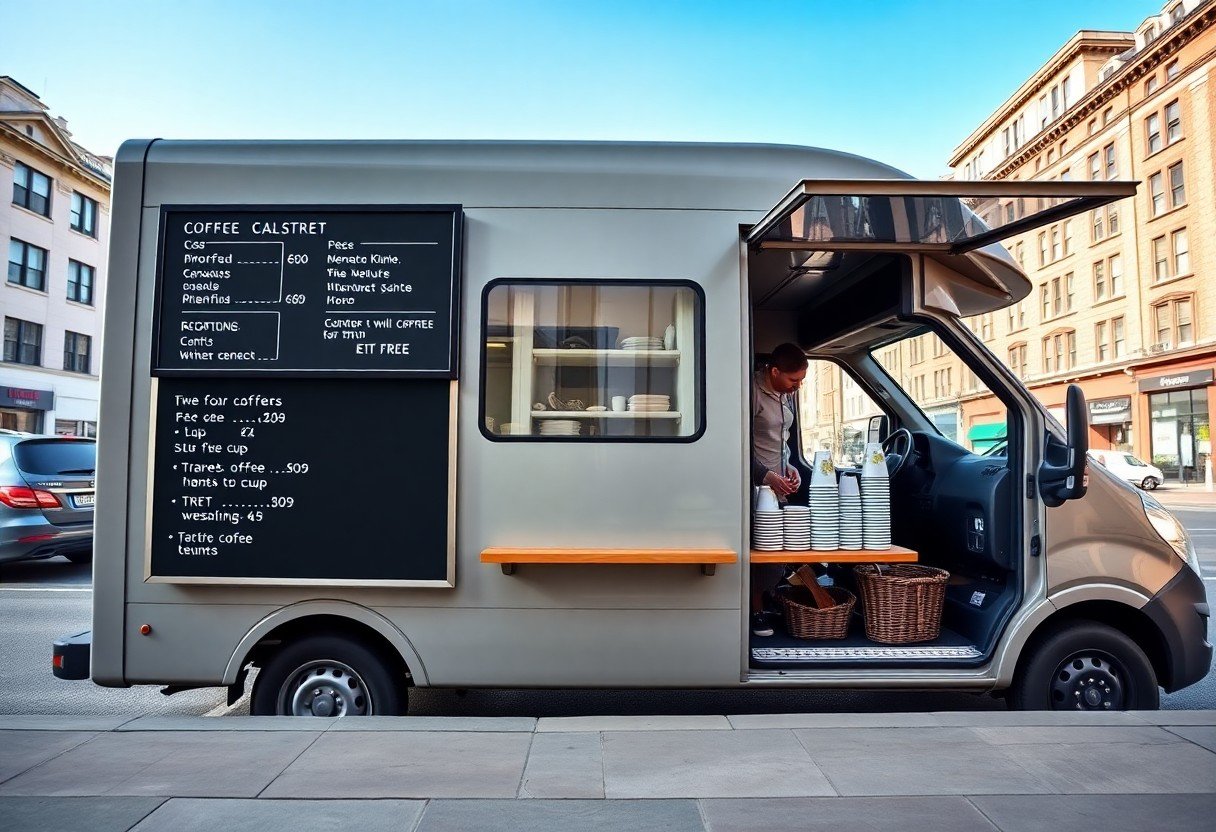
Financial Strategies for Sustainable Growth
Managing Costs and Pricing Effectively
To achieve sustainable growth, you need a keen understanding of your overhead and variable costs. Analyze expenses related to supplies, labor, fuel, and maintenance to establish a realistic baseline for your pricing model. Using accounting tools can help track these expenses and identify areas where you can cut costs without sacrificing quality. For instance, sourcing beans and products directly from local suppliers may reduce shipping expenses and reinforce your brand’s local appeal.
Pricing your offerings should be a strategic decision that reflects both your costs and market demand. Implement a tiered pricing model to accommodate different customer segments. For example, offer a premium price for specialty drinks while keeping standard coffee options competitively priced. Additionally, consider seasonal offerings that allow you to introduce new flavors while optimizing ingredient costs based on availability.
Understanding Revenue Streams and Profit Margins
Diving into your revenue streams is key to sustaining growth and ensuring profitability. Apart from standard coffee sales, explore opportunities for upselling items like pastries or merchandise. Catering events or corporate partnerships can also provide substantial revenue boosts. By diversifying your offerings, you reduce dependence on a single income source and can adapt to changing customer preferences.
Each product you offer has its own profit margin, which can vary widely. For example, a classic black coffee may yield a lower margin compared to a gourmet beverage with unique ingredients. Analyzing these margins allows you to tailor your menu toward the most profitable items. Regularly reviewing the cost-to-price ratio for all products can reveal which items are worth continuing, revising, or eliminating altogether. This strategic oversight ensures your coffee van remains financially agile and responsive to market shifts, ultimately supporting long-term growth objectives.
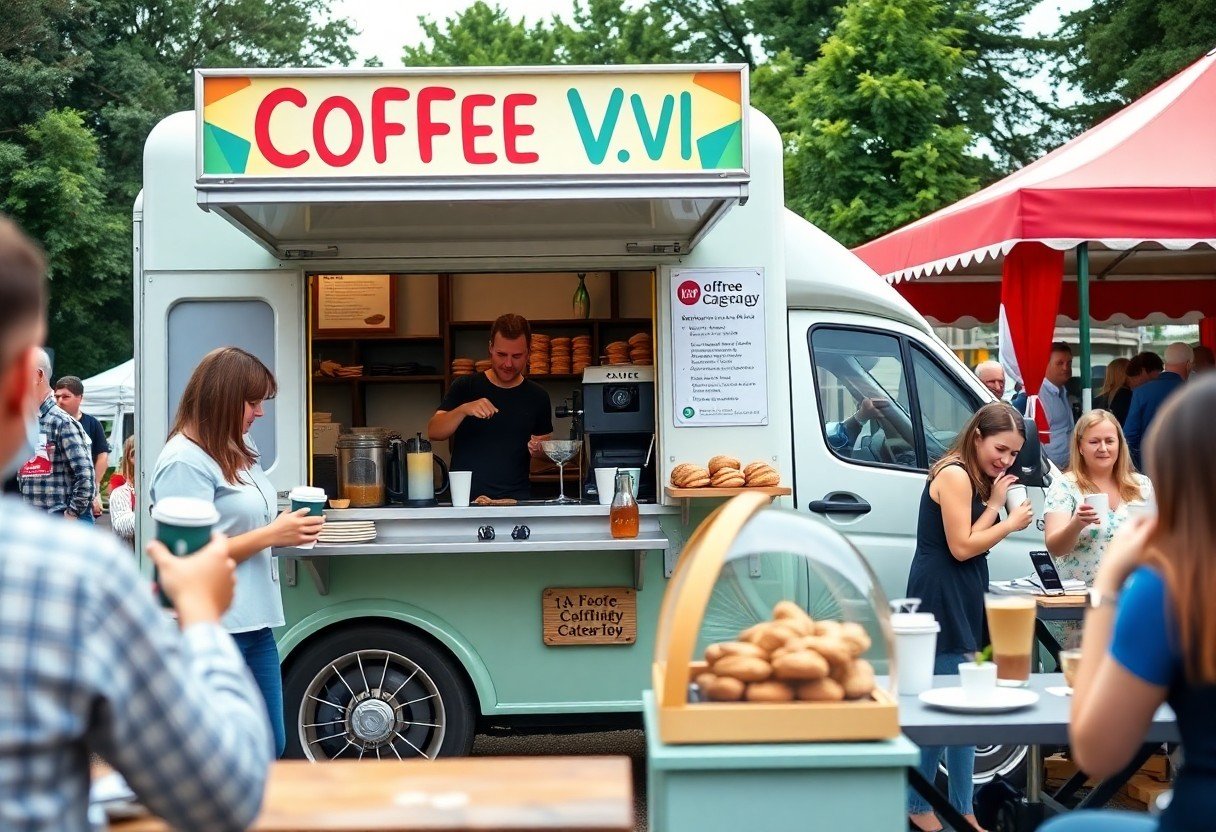
Navigating Challenges and Ensuring Adaptability
Responding to Market Changes and Customer Feedback
Staying attuned to market changes and customer preferences is vital for the sustained success of your mobile coffee van. Regularly collecting feedback through surveys or social media interactions allows you to identify trends and adapt your offerings accordingly. For instance, if you notice a growing demand for plant-based milk alternatives, incorporating them into your menu can attract new customers and increase sales. Additionally, offering seasonal drinks or limited-time promotions can create excitement and keep your offerings fresh and relevant.
Your ability to pivot quickly in response to customer feedback will help you maintain a competitive edge. Engaging directly with customers can reveal their likes and dislikes about your service and products. For example, after soliciting feedback, you might find that a particular pastry sells out quickly but is not on the menu often enough. By adjusting your supply chain to accommodate demand, you not only enhance customer satisfaction but also boost your overall profitability.
Implementing Backup Plans for Operational Hiccups
Operational hiccups, from equipment failures to supply shortages, can disrupt your day-to-day operations. Preparing backup plans can mitigate these disruptions and ensure your services remain uninterrupted. Consider establishing relationships with multiple suppliers to source ingredients, allowing for quick adjustments if one supplier is unable to fulfill an order. Additionally, having back-up equipment, like an extra espresso machine or grinder, can help you maintain service continuity during unforeseen failures.
Your commitment to operational resilience is reflected in the strategies you put in place. For example, if your primary location becomes unavailable due to construction or an event, having a list of alternative spots where you can set up quickly will help minimize downtime. Consider also training your staff to handle various roles so they can quickly adapt to changes, whether it’s addressing customer service or managing equipment. The smoother your operations run, the better positioned you’ll be to tackle any unexpected challenges that come your way.
To wrap up
Presently, operating a successful mobile coffee van daily requires a blend of strategic planning, quality service, and effective marketing. You need to carefully choose your location, as high foot traffic areas will greatly enhance your visibility and customer base. Consistently delivering high-quality coffee and maintaining a friendly demeanor will encourage repeat business and positive word-of-mouth referrals.
In addition, investing in social media marketing and engaging with your local community can help build a loyal customer base. You should also consider diversifying your menu and offering seasonal specials to keep your offerings fresh and appealing. By focusing on these key aspects, you can create a thriving mobile coffee van business that stands out in a competitive market.
FAQ
Q: What are the initial steps to start a mobile coffee van business?
A: Research local regulations for mobile food vendors, create a business plan, obtain necessary permits and licenses, choose a suitable van, and establish relationships with coffee suppliers.
Q: How should I choose the best locations for my coffee van?
A: Identify high-traffic areas such as parks, business districts, and events. Analyze foot traffic patterns during different times of day and consider local competitor presence.
Q: What equipment is necessary for operating a mobile coffee van?
A: Essential equipment includes an espresso machine, grinder, water supply, refrigeration for milk and food items, cash register or POS system, and storage for supplies.
Q: How can I effectively market my mobile coffee van?
A: Utilize social media to promote your location and offerings, create loyalty programs for repeat customers, collaborate with local businesses/events, and distribute flyers in the area.
Q: What strategies can improve daily operational efficiency?
A: Train staff thoroughly for quick service, pre-prepare popular drinks, organize storage for easy access to supplies, and implement a streamlined payment process.
